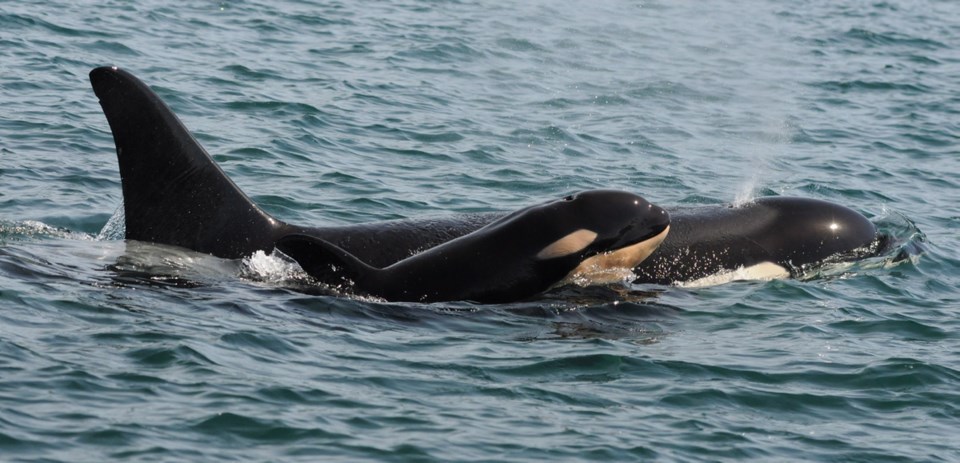With yet another baby orca born off the B.C. and Washington coast, some whale watchers are wondering if there was something in the water last spring.
There was, but it wasn’t killer whale aphrodisiac, said Michael Harris, executive director of the Pacific Whale Watch Association, which represents 34 operators in B.C. and Washington state.
“It was a very good year for Chinook runs around the Salish Sea,” said Harris, whose crews spotted a new calf, dubbed L122, swimming with L-pod in Puget Sound on Labour Day.
“Last year was a good fish year, and that means this is a good blackfish year.”
L122 is the first whale born to L91, a 20-year-old female nicknamed Muncher, and the fifth born into the “Class of 2015,” as the southern resident babies are being called.
The endangered killer whales made up of three resident pods — J, K and L — plying the waters off B.C. and Washington now number 81, according to the Washington state-based Center for Whale Research.
“It’s a nursery out there,” said Harris, who reminded boaters and commercial operators to observe from a legal distance. “You don’t drive an ATV through a nursery.”
While the wild orca baby boom is cause for celebration — “We haven’t had a year like this since 1977, when we had nine” — Harris and other naturalists are cautiously optimistic.
Since about half of all orca calves die in their first year, he was elated that four of the baby orcas have made it through their first six months.
“But L-pod has had some problems, and they’re going to go out to a big ocean, and we’ve got a little calf still nursing,” Harris said. “And L91 has never had a baby before, so they’re all learning the ropes.”
The latest birth underscores the importance of salmon recovery, since the arrival of more killer whales means more mouths to feed, a statement from Friday Harbor-based Orca Behavior Institute noted.
“We’re ecstatic to have a new calf in the population, but it’s important to look at the bigger picture,” said lead researcher Michael Weiss.
Weiss noted that while Center for Whale Research census data show the average for the last 35 years has been just over three calves per year, this year follows more than two years in which there were no new surviving calves.
“The whales are barely breeding at replacement rate, when what we really need is population recovery. For this population, and L122, to grow and flourish, the main limitation, a lack of food, must be addressed.”
Two calves in the southern population died in 2013, and four did not survive past a week or so last year, said Center for Whale Research executive director Kenneth Balcomb.
Only 35 of the 122 orcas born in L -pod in the last 40 years are still alive, he said.
Compared to the mid-1970s, when the animals were captured for marine parks, 81 southern resident whales is still considered a healthy population, Balcomb said.
Harris said the excitement today will pale in comparison to that next spring if “L122 shows up in the Salish Sea after spending the winter out in big water.”
— With a file from Canadian Press



